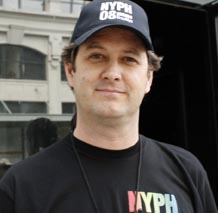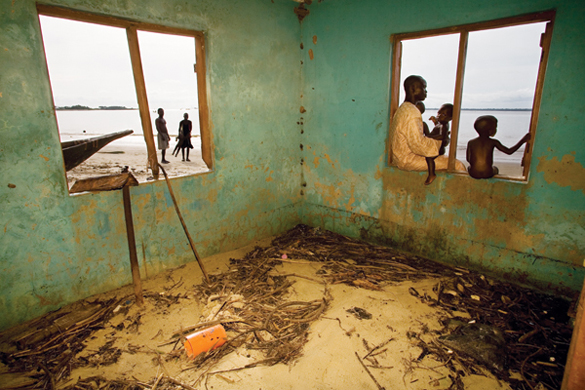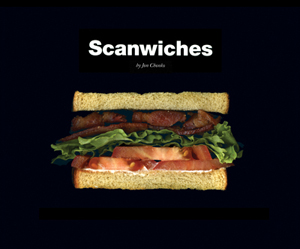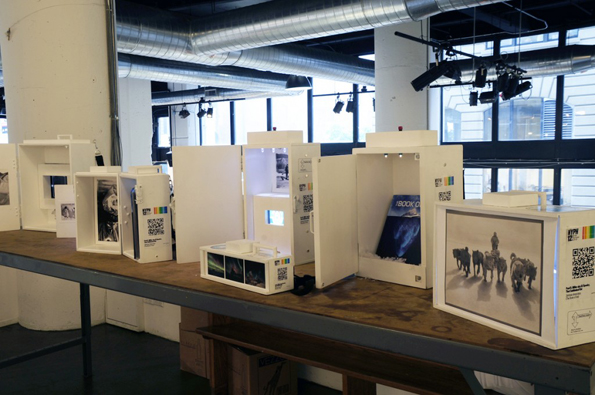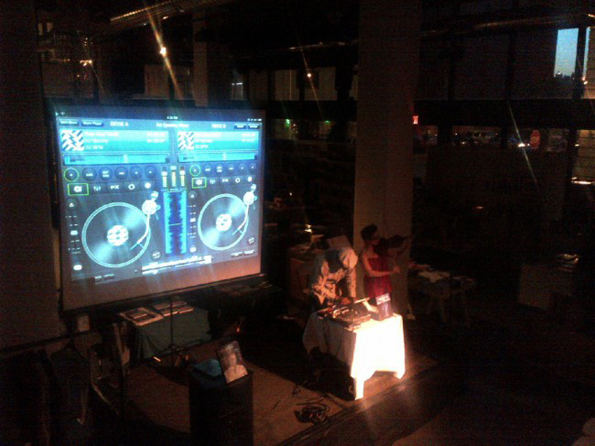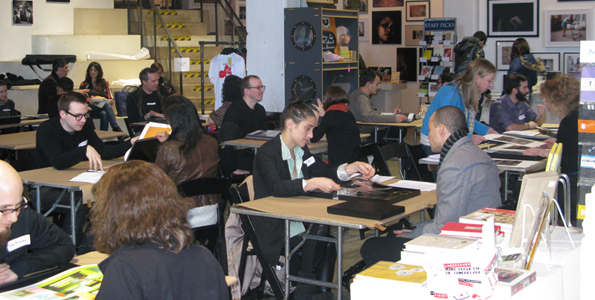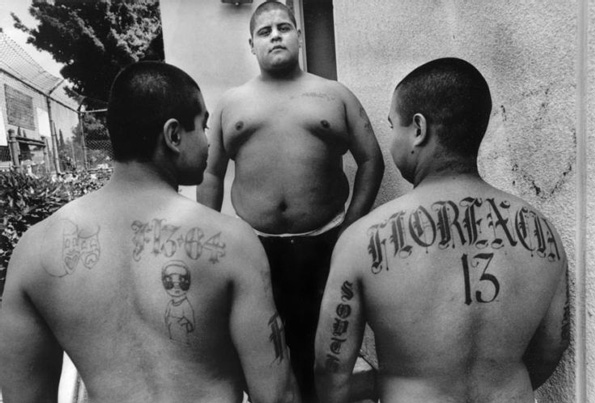Daniel Power: CEO powerHouse Books, Co-Founder, The NY Photo Festival (Pt. 2)

Daniel Power accepting a Lucie Award for powerHouse Books in 2007 (Source: Lucie Foundation)
Daniel Power is the Founder/CEO of powerHouse Books, a world-renowned publisher acclaimed for its diverse publishing program and its ethos of perpetually challenging popular conceptions of the role of the “art book” in contemporary culture. He is also the Director and Co-Founder of the New York Photo Festival, an annual event dedicated to the “Future of Contemporary Photography” which draws thousands of people every year from all over the world.
What led you to start the New York Photo Festival?
In 2007 I was introduced to Frank Evers, at the time the managing director of VII Photo Agency. Frank mentioned in passing that he was looking to produce a festival celebrating photojournalism and all of its many facets. I told him that I had been thinking of a similar concept, an event celebrating the image in pop culture and exploring its implications for visual communication and understanding.
We stayed in touch and a few months later decided to combine our ideas into one event, designed to be an American counterpart and thematic successor to the prestigious European photo festivals. We joined forces with our respective companies and formalized the concept as the New York Photo Festival.We reached out to Kathy Ryan, Martin Parr, Leslie Martin of Aperture and Tim Barber, who used to be the photo editor for Vice Magazine. We told them that as curators that they could do anything they wanted as long as it “quickened the pulse.” We invited a number of satellite pavillions, non-profits, foreign entities like Foam Magazine from the Netherlands, Archive of Modern Conflict from the UK, Museum of Contemporary Photography from Chicago.
The inaugural edition of the festival was a big success, with thousands of tickets sold and photo submissions from 87 countries. Every year since it’s continued to grow, with really exciting work featured as well as visual installations, presentations, ceremonies and live events. We ended up extending the last one by eleven days. We had a number of great curators for NYPH’12: Glenn Ruga, Amy Smith-Stewart, Claude Grunitzky, Paul Miller aka DJ Spooky That Subliminal Kid.

Do you have any advice for photographers hoping to publish a book one day?
Whatever your subject matter is, you have to know it really well, you have to live with it, sacrifice for it, do it obsessively until you know it inside and out. Living with the work you’ll start to see trends and patterns in it, you’ll discover what stories you’re trying to tell. Every book has a narrative, even if it’s fine art.
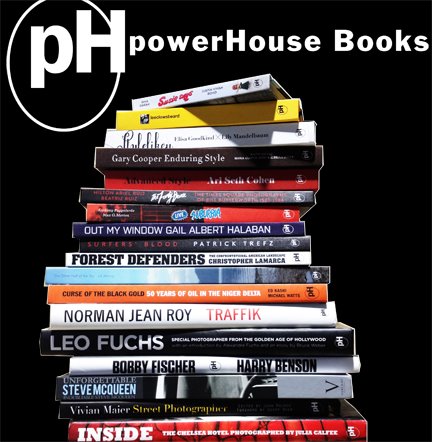 You have all these aspects of your business…is there a different gratification that you get out of one aspect versus the other?
You have all these aspects of your business…is there a different gratification that you get out of one aspect versus the other?
Doing books for a long time, there are a lot of highs & lows, more lows than highs probably, but that’s just the nature of the beast. It’s a lot of work and you’ll never make everyone happy, and a lot of artists are very difficult to work with.
A lot of egos?
A lot of egos! And a lot of trying to take an idea and bringing it into commercial reality. It’s your money, which is not the most important thing, but it can’t be totally ignored.
My dream was really to bring these types of books to a wide audience, to not just cater to a small “in” crowd.
A lot of photo books today are geared to ten book shops in all of the world. These publishers are one-man shows and they know that they’re going to reach 90% of the ultimate audience, which are other creative directors, other photographers, other tastemakers. They’ll send the book free to a few influential bloggers and writers, and they’ll sell it online, and that’s it…
…and that’s not what I said I would do. I wanted to bring a Jamel Shabazz book to people who shop at Barnes & Noble and have them just be tripped out by it, to have it change their life.

Audio/Visual - An Exhibition of Music Photography (Photo: Krzysztof Poluchowicz)
..and which you ARE doing….
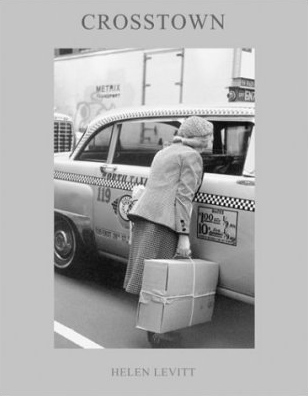 I think powerHouse has got enough of a reputation and history that now whatever we do there’s always a certain credibility that comes with it. There’s also a certain acceptance and knowing that it’s going to be pure and kind of take you in a different direction.
I think powerHouse has got enough of a reputation and history that now whatever we do there’s always a certain credibility that comes with it. There’s also a certain acceptance and knowing that it’s going to be pure and kind of take you in a different direction.
On a given project we seek to adhere to an artist’s vision as best as we possibly can, but with a method to make it accessible and as easily discovered as possible by the public…be it classical photography, monographic photography, photojournalism, street culture, you name it.
You’ve got people in the photo world, collectors and traditionalists so to speak, who appreciate Helen Levitt, and we’ve published many books by her. Then you have youth culture and certain people from the style, fashion and design worlds that appreciate Jamel Shabazz.
The really exciting thing for me is seeing those worlds mix; having the young people discover Helen Levitt and having the Helen Levitt people discover Jamel Shabazz…and that’s what we are able to do…get these books into as many hands as we possibly can, and to blow as many people’s minds as we can. Try to get something that would normally only be sold in boutiques and try to get it into stores. Take the classical stuff that you would find in photographer bookstores, and get them into boutiques.
We were successful on some levels with that, to the point where we learned several years ago that other publishing companies were having editorial meetings about books we were publishing (laughs).
 Competition grew from the early 2000s, now a lot of stuff that would of come to us ends up elsewhere.
Competition grew from the early 2000s, now a lot of stuff that would of come to us ends up elsewhere.
Has that been difficult?
Not necessarily…it’s probably nice for the artists because they’re probably getting more sales, but it’s going through a machine process now and the books might not be handled in the same personal way that we would do it, because we’ve always been a small shop and we always will be.
In regards to powerHouse, it has kept us on our mark, because it’s forced us to look elsewhere and discover new things.
I think it’s important for a dynamic company to be able to weather change…people start doing what your doing, you’re off doing something else. You’ll lose some things with it but ultimately you’ll gain more…maybe not financially, but you gain more.
If you’re the web designer and you want to try designing a book, great…if you’re an editor and you want to sign up this project, not a problem…BUT people still got to maintain their job, they still have to deliver.
You have a very solid team. Do you have a certain thing you look for in the people that you work with?
Everyone that’s worked with us and gone on to an amazing achievement was always hired for something else (laughs).
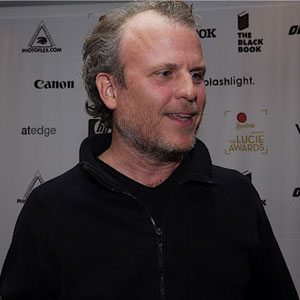
Photo: Lucie Foundation
I think it’s that process of starting someone very low—in routine work to a certain extent—and teaching them the appreciation of having to take care of business—because we are a business—payroll has to be met, and you have a function of your job BUT…your ability to influence what we do is completely wide open. You can go as far as you want.
I’ve never said no to anything that anyone’s proposed, really. If you’re the web designer and you want to try designing a book, great…if you’re an editor and you want to sign up this project, not a problem…BUT people still got to maintain their job, they still have to deliver. If you’re a production director, books still have to get printed. If you’re a designer, you still have to design books.
A large part of our publishing company is experimentation. Give anything a shot. The more difficult, the more strange, the more challenging, the better. That’s what makes life interesting, that’s what keeps us on our toes.
Were there any challenges or frustrations that you had to overcome in order to make powerHouse a success?
Well, it was difficult at times to convince a recalcitrant market, namely book retail, why a particular project was important despite the subject matter being difficult for people to comprehend.
…having something be too ahead of its time, too difficult for people to wrap their heads around…such frustrations were mitigated to an extent by achieving some level of satisfaction in an element of it that ultimately wasn’t worth it financially, but was worth it intellectually.
One particular book stands out…in 1998 I was introduced to Mark Holburn, legendary photo editor—he’s brilliant. He met this young woman, Polly Borland, who had been travelling all over photographing infantilists—men who, sexually or not, get off on being babies. Mark Holburn took her photos and did a superb—mindblowing—sequence.
 It’s a rare art form to be able to take a massive body of work and not only edit it down, but to create a narrative in way that’s dramatic and addresses a storyline. Photo books are like a novel—there’s a beginning, a middle and an end…there’s drama, there are tensions, there are subplots…
It’s a rare art form to be able to take a massive body of work and not only edit it down, but to create a narrative in way that’s dramatic and addresses a storyline. Photo books are like a novel—there’s a beginning, a middle and an end…there’s drama, there are tensions, there are subplots…
Bar none this was one of the best sequences I’d ever seen, but the subject matter was just so confontational. People got freaked out by it. It was done really well, but it was intense—a guy shaving his scrotum, etc.
So this project languished for a year, we couldn’t get anyone involved in it, reps were just totally freaked by it, and I was resigned to the fact that we would sell only a few hundred copies.
It just so happened that Susan Sontag saw the work and fell in love with it, she was so blown away that she agreed to write an essay for it. Her contribution to the book allowed it to gain a bit of credibility, although in the end it still didn’t sell that much…but it was a beautiful book.
So that frustration of not being able to sell a book, or not being able to convince people that the book was really something to be collected and owned for the narrative layout, for the sequence, despite the content being very challenging….ultimately this frustration was offset by the opportunity to work with Susan Sontag, and securing an amazing essay that had a life even beyond the book itself (it was published posthumously in her collection of essays).
Photo books are like a novel—there’s a beginning, a middle and an end…there’s drama, there are tensions, there are subplots…
 The frustrations of having something be too ahead of its time, too difficult for people to wrap their heads around…such frustrations were mitigated to an extent by achieving some level of satisfaction in an element of it that ultimately wasn’t worth it financially, but was worth it intellectually.
The frustrations of having something be too ahead of its time, too difficult for people to wrap their heads around…such frustrations were mitigated to an extent by achieving some level of satisfaction in an element of it that ultimately wasn’t worth it financially, but was worth it intellectually.
I just wish the consumer would be more trusting that we do something that’s worth collecting, but often there still needs to be some voice of authentication, that permission to own something—a critic, a writer, a blogger. Back in the day there weren’t any bloggers…the New York Times would review a photo book maybe a twice a year, so getting in there was very difficult.
For the NY Photo Festival frustrations were different; you’re spending half of a year curating something, raising a quarter of a million dollars, trying to produce something…you get a lot of support, a lot of “high fives,” but you also get a lot of grumbling, “Oh, the art was too experimental.” In some ways it reminds me how the publishing world was in the late 80s.

NYPH'12 Panel "On Razor’s Edge: Form and Content in Documentary Photography"
There’s an interesting parallel that I’m seeing, about presenting photo installations and what photography is in a real-life experience on a wall, or on a screen, that mimics what the retail world was like for photography in the late 80s: very static, very traditional, not a lot of understanding of what they were experiencing.
People had to be told “this is good for this reason.” They were still stuck on this idea that photographs had to be in frames, that they had to be on a white wall in a linear fashion….and other photo festivals are like that.
The NY Photo Festival was supposed to be an explosion. We had massive installations, aggragations of small prints…there were monitors, slideshows, movies…books. Some people were like, “A photo show with books? What is that? A photo show has to be framed on the wall!”
Is it difficult relinquishing control of things to people? In my own experience moving from being a web developer to a project manager, that was one of the toughest things for me to deal with….that and knowing what battles were worth fighting…
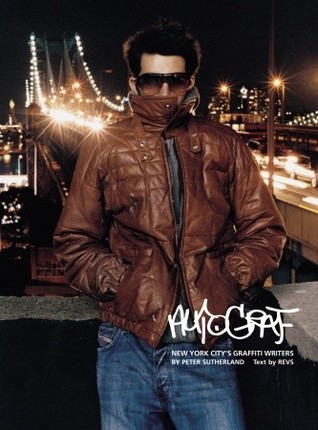 It is…there are many books that I would have edited down, but at the end of the day is it worth these drawn-out battles, to cut 20 or 30 images? Would the book be stronger with a tighter edit? Yes…but would it have made a huge difference in sales? No…. So is it worth wasting your time fighting for it? You don’t want to live your life with just a bunch of Pyrrhic victories.
It is…there are many books that I would have edited down, but at the end of the day is it worth these drawn-out battles, to cut 20 or 30 images? Would the book be stronger with a tighter edit? Yes…but would it have made a huge difference in sales? No…. So is it worth wasting your time fighting for it? You don’t want to live your life with just a bunch of Pyrrhic victories.
At some point you just have to let people go off and do their thing. You want to go off and do a graffiti book? Do it. Do it the way you envision it, make it look good, make it so that you can sell it, make sure you promote it and give it to stores. Ultimately it adds to the house.
I don’t have to hand-design books anymore. What I can do is be creative when it comes to financing—how can we offer something that is more than money? In some cases we can bring an exhibition space. We can bring promotion ideas and capabilities. We can bring a credibility and a history that others cannot bring.
We never publish a book to appeal to graphic designers, hipsters or cultural creatives. We just do things that interest us, that we feel need to be done, and we do them in a creative way that resonates.
What advice would you give to individuals looking to follow a similar career path? Are there any skills or behavioral traits that you would encourage them to cultivate? Is there anything they should NOT do?
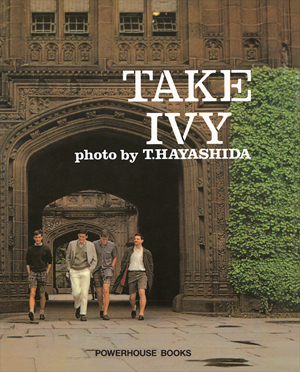 There are no skills that you need. Behavioral traits…you’ve got to do what you do really well…better than anyone else, to the extent that you think it’s perfect. You have to aspire to the highest quality, and the most finished approach. Whatever you engage, it has to be complete and almost perfect from start to finish, top to bottom. No cutting corners at any level, you have to really knock it out of the park.
There are no skills that you need. Behavioral traits…you’ve got to do what you do really well…better than anyone else, to the extent that you think it’s perfect. You have to aspire to the highest quality, and the most finished approach. Whatever you engage, it has to be complete and almost perfect from start to finish, top to bottom. No cutting corners at any level, you have to really knock it out of the park.
That attention to detail, that follow-through will show in ways that people won’t understand, because it’s subconscious. If you see something that’s really thought out and well-executed, be it a book or installation, or a party, an opening…people will get it. They understand that. And you will be known for doing things of quality, that stick in people’s mind.
I’ve seen people with no experience do very well at something I needed them to do. They could take that quality and transmit it to something that they were very passionate about, and knock it out of the park. You just need to be thorough in what you do and shoot for the highest excellence that you can possibly execute and if you don’t know what to do, ask for help, learn it, master it. Be a very thorough and quick study.
It’s interesting to hear you talk about that, because in my personal experience sometimes I’m such a perfectionist that I actually paralyze myself.
At that point you find your bead—a bead is sort of a line that you see continuing—it’s all just gut instinct, boom boom boom…if you do something really well, you can just do a gut selection, a quick edit, and it’s done, you don’t need to revisit it over and over. And because YOU did it, it becomes worth something.
With book editing and sequencing, a lot of it is gut reaction—“What flows? What seems to work?” You just put things together and see that they resonate. That works for installing, that works for photo editing, that works for a lot of things. People doublecheck themselves too much.
I know I do! I guess it’s a matter of finding that balance between being emotionally invested in doing high quality work but not overthinking things to the point of impeding it.
 Don’t overthink it! Again, make sure it’s edited, make sure it’s designed and has a spark in some way…if so it will find its audience. We never publish a book to appeal to graphic designers, hipsters or cultural creatives. We just do things that interest us, that we feel need to be done, and we do them in a creative way that resonates.
Don’t overthink it! Again, make sure it’s edited, make sure it’s designed and has a spark in some way…if so it will find its audience. We never publish a book to appeal to graphic designers, hipsters or cultural creatives. We just do things that interest us, that we feel need to be done, and we do them in a creative way that resonates.
Well I think that philosophy is one reason powerHouse is so successful, because there’s a certain authenticity in motive that comes through. Especially in these times, when so there is so much targeted marketing and orchestration of brand associations.
If you want to be authentic and break molds, then you do want you want to do for a reason that has nothing to do with the market. People will react to something if it has even a shred of authenticity to it.
These days, the bloggers, the writers, all they do is consume digital, print, book and digest this stuff, and they can sniff out crap pretty easily. In fact they don’t even pay attention to it unless it’s well done and has a ring of authenticity, and appears that it is on a sort of path for a purpose, rather than just to appeal to a certain market. The bloggers will give the consumer permission to engage, to own whatever the product is, because they’ve said it’s worthwhile…they’ll mediate for you.
In these tough economic times, how best can small publishers can make their mark on the book market?
 The goal is to make things that people will want to own.
The goal is to make things that people will want to own.
If your goal is to impress people who patronize Dashwood, it’s very easy to make a high quality art book, a volume of expression that’s kind of mind-blowing. You can do it, but you’re not influencing the retail market, you’re going straight to the consumer…through your website, through your blog, and maybe a handful of stores that have a capacity to order from you directly. You’re doing a limited edition and covering your printing costs.
More has been done in that market in the last few years than in all of photo book history. So to that extent, you just persevere with your vision, do what you want to do, how you want to do it.
There’s even an entity in the UK, Self Publish and Be Happy. It’s an entire organization just selling self-published books. It appears to be doing very well.
I believe that sort of thing has done a lot to take photography book publishing out of the mainstream publishers and directly into consumer’s hands.
Anyone who’s true to his or her own vision and wants to do something that will change the world . . . will have done the homework, the research, sought out similar books and projects in order to further define what their true voice and vision is.
Certain advances in technology—smartphones, social media—have empowered more people than ever to document the world around them and to promote their creative endeavors. Some people are excited by this, while others lament that truly talented artists are getting lost in a market that is saturated with amateur talent, or being forced to resort to gimmicks in order to get attention.
What are your thoughts on this?
 There’s no reason why anyone would try to put anything on YouTube if they’ve got a mission to produce something that means something unless they’re using it as a tool to send people links to their work. YouTube is an ad venue, much like Vimeo. It’s a giant web-surfing wasteland.
There’s no reason why anyone would try to put anything on YouTube if they’ve got a mission to produce something that means something unless they’re using it as a tool to send people links to their work. YouTube is an ad venue, much like Vimeo. It’s a giant web-surfing wasteland.
If you’re serious about what you want to do….people have more attention now than ever before. There’s all this influx of content, but the people you’re trying to reach—the people that matter—cut all that out. They don’t watch TV. They’re not susceptible to advertisements or inducements to click on this website to look at these things.
I get 100 emails a day—“look at this website.” Do I look at it? No…it’s “delete, delete”…You could spend your whole life just reading people’s emails, promotions, etc. However, when certain people or websites that I trust say “This is kind of interesting,” then yes I will take a moment to look at something.
People with laid-back attitudes are not going to go anywhere…and they never have. You are what you make happen.
Anyone who’s true to his or her own vision and wants to do something that will change the world so to speak—and you have to start off with that concept: “I want to change the world; and my world is this, or my world is photography…”—that person will have done the homework, the research, sought out similar books and projects in order to further define what their true voice and vision is.
I’ve done a lot of portfolio reviews and have seen a lot of the same concept, the same approach; the projects that really stick out are the ones where the people really knew what others have done on the same subject. They go to publisher websites, they go to the bookstores and see what’s being produced, and they see what is trending in these fine art schools, magazines, blog sites…
…BUT whatever they do is true to their vision, and it’s done to the best of their ability, and it’s intelligent. And it takes time to produce, and that attention to detail comes through in the final product, and that will gain attention….it’s not derivative.
In lieu of YouTube, what would you say are the proper networks for aspiring artists to promote themselves?
Sometimes nepotism works, meaning you’re in New York City, you’re meeting people, you’re networking…some of your friends will work in organizations that allow them to get things under the nose of certain editors or they themselves have the ability to choose things. A lot of times book reviews are sent to junior editors, sometimes the interns.
Another way is getting yourself affiliated with something that’s happening, be it a group show, or a little operation that sells self-published photography books.
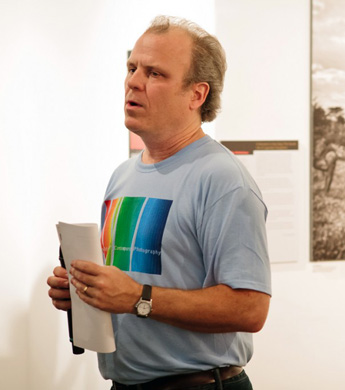
Photo: Matthew Lomann
Look at Sean Combs, when he was an intern in the music industry, he knocked the socks off of whoever he was working for. He was tireless, he outperformed anyone’s preconception of what an intern was.
New York Photo Festival 2012, one of the strongest works I saw was by a young Greek woman living in Paris, Evangelia Kranioti. She was one of the photographers Claude Grunitzky chose. She came here, she didn’t just exhibit her work and hang out…she pestered me for 3 days (laughs)!

"The Greek" - Evangelia Kranioti
She presented me with two projects, made me look at her film submission for a government grant—which blew my mind—and by the time she left she had me on the hook for two book projects (laughs). That woman worked it. Not overbearing, but she worked everything. She was very nice and the work was simply impeccable.
She had spent years sailing on these Greek cargo vessels photographing the sailors and the people, the prostitutes and bar owners that cater to them at ports of call. The narrative, story-like approach she employed in laying context to her project, in giving voice to her subjects, of framing what she was doing and why…it was entrancing; a grand story unfolding, witnessed by these slices of images and filmic frames. The photography was very good, the project conceptually very sound. She was good; she used her contacts wisely, and she pounced at the right time.
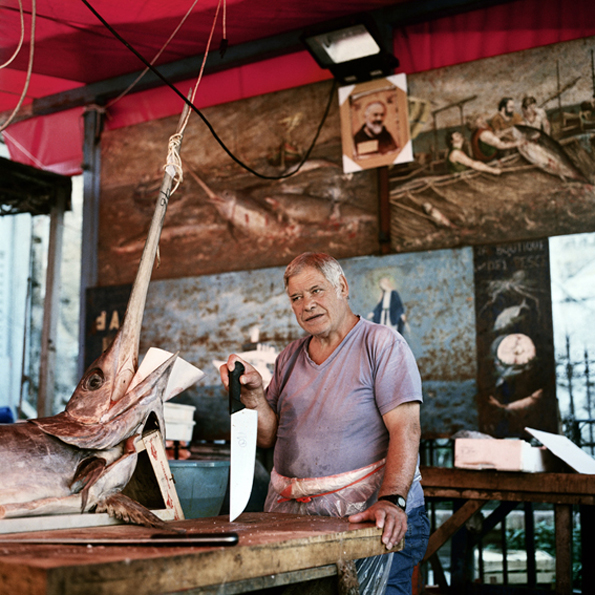
"Ballarò" - Evangelia Kranioti
That really has to happen in life. Certainly I would not have done anything in New York City if I did not have ambition and I did not work my contacts. If I meet someone and they’ve got something that is potentially good, then I might want to develop it. And if I become friendly with them, even better.
Would you say that a key thing is not falling into a comfort zone?
Exactly. If you’re in the creative world, or borderline business-creative, there’s ample opportunity. The problem is that it’s easier to feel safe and relaxed and have a good job and not have to worry.
In the beginning I always had low-paying jobs, even when I started powerHouse, I started in ’95, I still had massive credit card debts—massive!—until 2002.
Do you have any other creative outlets that you wish to mention or that you feel like you would like to nurture more?
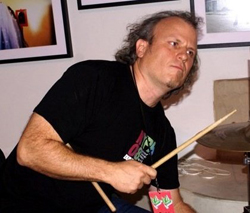 (pauses) At my age, no…I used to play drums and can still do it if I need to, I don’t know if I could keep a rhythm very well (laughs).
(pauses) At my age, no…I used to play drums and can still do it if I need to, I don’t know if I could keep a rhythm very well (laughs).
Once you assume the role of an editor or a curator, that in essence is your art form at that point. You’re curating, you’re editing, you’re producing, and that ultimately is an extremely satisfying job because you’re responsible on many levels and ways that come back to you in parts of life that you would never expect.
Like what?
Like how to manage money. How to borrow, how to balance theoretical budgets. How to schedule…because a lot of things in life are cash flow. People look at profit margins, that’s not really how a lot of things happen…
So you’re editing, curating, directing and producing; those are several art forms unto themselves. It’s a “3D layer,” so to speak, of being an artist. You’re also being creative with time, which is another layer. It’s not like being an actor in a film, it’s like being the director, who’s responsible for the sound, the costumes, the cinematography, lighting, hiring people…the finished product. It’s multiple forms put together to make sense….and that’s a fairly exciting thing, maybe even more so than being a virtuoso.
What direction do you see yourself heading in the future?
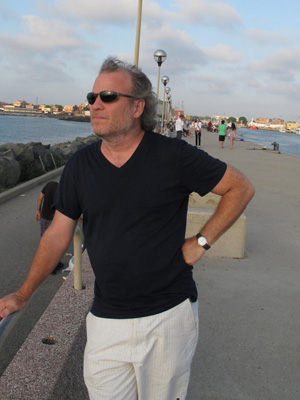 I’m fifty now, so at this point it’s probably trying to push myself in areas that I didn’t think I could do, like opening new businesses that are not directly related to what I’m doing now.
I’m fifty now, so at this point it’s probably trying to push myself in areas that I didn’t think I could do, like opening new businesses that are not directly related to what I’m doing now.
I’ve toyed with the idea of teaching more, I’ve taught in the past and enjoyed it, although it can be pretty intense.
One reason I started the New York Photo Festival is because I wanted to try something different, to get out of a comfort zone so to speak . . .
Yes I publish books, yes I have a retail store, but how about making a temporal event that draws a lot of people together and showcases what usually takes several months to plan and execute and present, but do it at the bat of an eyelash—set up the walls, put in the lights, do the promotion, have the events, talks, performances…then tear it all down after 4 days, kind of like a circus.
Much like you’ve got to exercise regularly, you have to push yourself in creative pursuits, something may strike you as an odd idea, but…try it! You might fail, you might succeed…but it’s important to try. Because that way you keep growing and expanding your talent base and experience.
Keep up with Daniel Power and his team’s ongoing endeavors at:
–powerHouse Books
–powerHouse Arena
–New York Photo Festival







